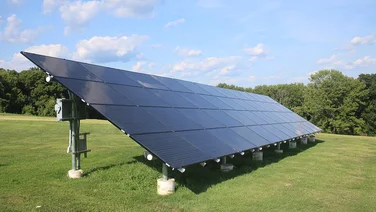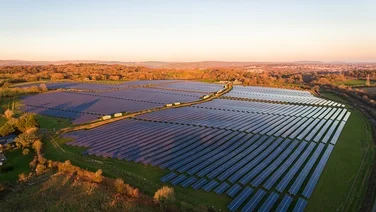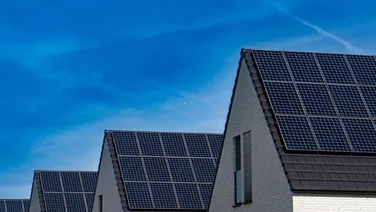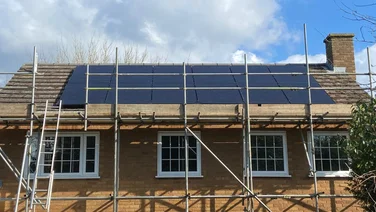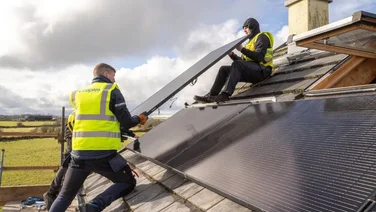- What’s on this page?
- What was the Feed-in Tariff?
- How much money could people earn from the Feed-in Tariff?
- Was the Feed-in Tariff a success?
- Can you still access the Feed-in Tariff?
- Why did the Feed-in Tariff end?
- Has the UK government replaced the Feed-in Tariff?
- Will the UK government ever bring back the Feed-in Tariff?
- Summary
✔ The FiT scheme was an incentive to help early adopters of solar
✔ The FiT ended in 2019, but pays out for some people until their contract expires
✔ The SEG replaced the FiT in 2020, paying only for surplus electricity generated
Solar panel costs are high, which is usually one of the main barriers to buying these green pieces of tech. Luckily, there are incentives and government grants to help certain homeowners with these costs.
But navigating the landscape of solar incentives in the UK can be complex. From the rise and fall of the Feed-in Tariff (FiT) to the introduction of the Smart Export Guarantee (SEG), we’ve seen a dynamic shift in renewable energy support.
Whether you’re a long-time solar enthusiast or considering your first installation, understanding these changes is crucial. This article looks into the history, impact, and future of the FiT, offering insights into the ever-evolving world of solar.
Although the sun is setting on the FiT, the solar dream is still brighter than ever. If you’re curious about making the solar leap, pop a few details in this form and get free quotes for solar panels tailored just for you.

What’s on this page?
What was the Feed-in Tariff?
The UK government introduced the FiT scheme in April 2010 to encourage the widespread adoption of small-scale renewable and low-carbon electricity technologies by paying for the electricity generated, as well as the surplus electricity fed back to the grid.
Following the FiT’s end in 2019, the UK introduced the Smart Export Guarantee (SEG) in 2020, which pays only for surplus electricity. As a replacement scheme, the SEG still compels energy suppliers to reward homeowners for the energy they send back to the grid, but the onus is on the homeowner to choose the best SEG rates.
How did the Feed-in Tariff work?
There were two components to the Feed-in Tariff scheme:
- The Generation Tariff paid for every kilowatt-hour (kWh)* produced. Rates depended on the system type, size, and date – with earlier installations receiving higher rates – but decreased over time to reflect falling renewable technology costs.
- The Export Tariff added an extra payment for surplus electricity exported to the grid, encouraging efficient energy production beyond personal consumption.
Smaller installations (of up to 5,000 kW, or 5 MW (megawatts)) that met technical and safety standards were the only ones eligible. For optimal rates, properties often needed a minimum Energy Performance Certificate rating of D or above.
*A kilowatt-hour (kWh) refers to the amount of energy used in your home, based on an hour’s consumption for one thousand watts, or one kilowatt (1 kW). Each of your household appliances will have a kW rating (e.g., a 2 kW washing machine), which will tell you how much energy they use – this is how suppliers work out your energy bills.
How much money could people earn from the Feed-in Tariff?
The FiT rates were not static and changed based on the technology, installation capacity, and when participants registered. So, as renewable tech got cheaper over the nine years of the scheme, potential FiT earnings took a sharp nosedive.
In 2010, an early-adopter solar PV installation could get up to 41.3p per kWh through the scheme, with an added export tariff of around 3p per kWh. Given an average solar installation cost of £20,000 for a three-bedroom home back then, the rate of return was around 6.6%. This calculation means that you’d get 6.6% of the value of your investment over the lifetime of your solar panels.
By 2019, however, the generation tariff for new solar installations plunged to around 3.8p per kWh (while the average installation cost for a similar-sized home also dropped to around £7,026), with an export tariff of around 5-6p per kWh.
But while the 2019 figure sounds less appealing, it’s worth noting that the average rate of return here is very similar to figures in 2010, at 6.5%.
Was the Feed-in Tariff a success?
Thanks to the FiT scheme, lots of people put solar panels on their houses and helped solar energy grow in the UK. Back in 2010, the UK’s solar capacity stood at a mere 95 MW but skyrocketed to over 13,265 MW by 2019, after the FiT’s influence.
However, while the FiT boosted demand and contributed to falling solar costs (in line with global trends), it wasn’t without criticism. Sharp, unexpected rate cuts sometimes led to uneven industry growth.
Still, the overall impact of the FiT was undeniably positive, acting as a cornerstone for the UK’s solar expansion over a decade.

Can you still access the Feed-in Tariff?
Unfortunately, the FiT scheme closed to new applicants on 31 March 2019, so no newbies are allowed. But if you got in before the deadline, you’re good – the rates you signed up for will stay the same until your contract ends.
The FiT guaranteed payments for a specific period, usually 20 years (or 25 years for solar PV systems installed before 1st August 2012). Meaning that those who got in just before the scheme’s end in March 2019 will continue to receive FiT payments until at least 2039.
Why did the Feed-in Tariff end?
Well, the scheme was a victim of its success. The scheme boosted the UK’s solar capacity by 2019 – and with cheaper panels available, solar installations made economic sense even without big incentives.
The government budget was also a factor. The FiT’s generosity ended up costing consumers more through indirect green energy levies on utility bills. There were also concerns about overcompensating installers, leading to undue windfall profits.
Lastly, the UK’s energy strategy shifted its focus to larger-scale renewable projects and newer technologies that could make a bigger impact on reducing carbon.
Has the UK government replaced the Feed-in Tariff?
After the FiT scheme ended, the UK government introduced the SEG in January 2020 – which is distinctly different from the FiT.
Unlike the FiT, the SEG only pays renewable energy producers for exporting extra electricity to the grid, rather than paying for all generated power and extra for exports. The FiT gave you a stable income, usually between several hundred to over a thousand pounds annually for a regular solar PV installation.
On the other hand, SEG earnings hinge on surplus energy and fluctuating supplier rates, which is much less predictable. With the SEG, energy suppliers determine export rates (but the rates can’t be negative) so they can adjust the pricing according to demand.
While both schemes reward renewable energy, the SEG leans more towards market dynamics and flexibility, whereas the FiT offered more direct and often higher financial incentives.
Will the UK government ever bring back the Feed-in Tariff?
The FiT was significant in its time, but with cheaper technology and new priorities for net-zero carbon emissions, it’s doubtful it’ll come back.
A greater emphasis on grid flexibility, energy storage, and integration of larger renewable installations might lead to different incentives or support mechanisms rather than reintroducing the FiT.
Besides, with a more robust industry and greater public acceptance of renewable energy, there’s less need for heavy subsidies to stimulate growth – the shift to the SEG reflects a market-driven approach to reward renewable energy generation.
Summary
It’s clear the UK is serious about a clean future, and our solar journey from the FiT to the SEG shows it. Although navigating these incentives can seem daunting, the benefits are obvious, and embracing renewable energy has never been more vital.
Considering joining the solar movement? Complete our short form and our experts will match you with free quotes for your ideal solar panels.

